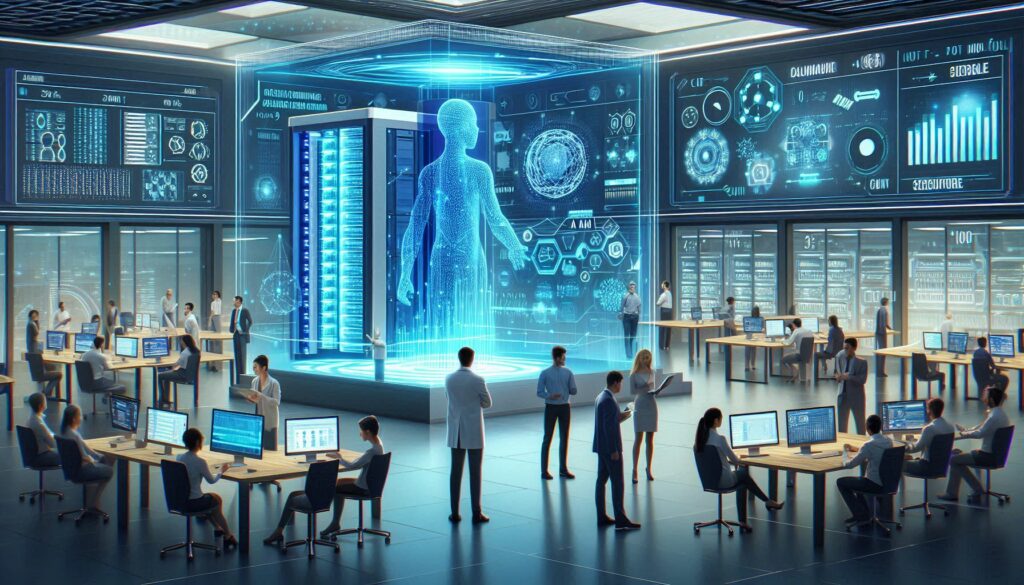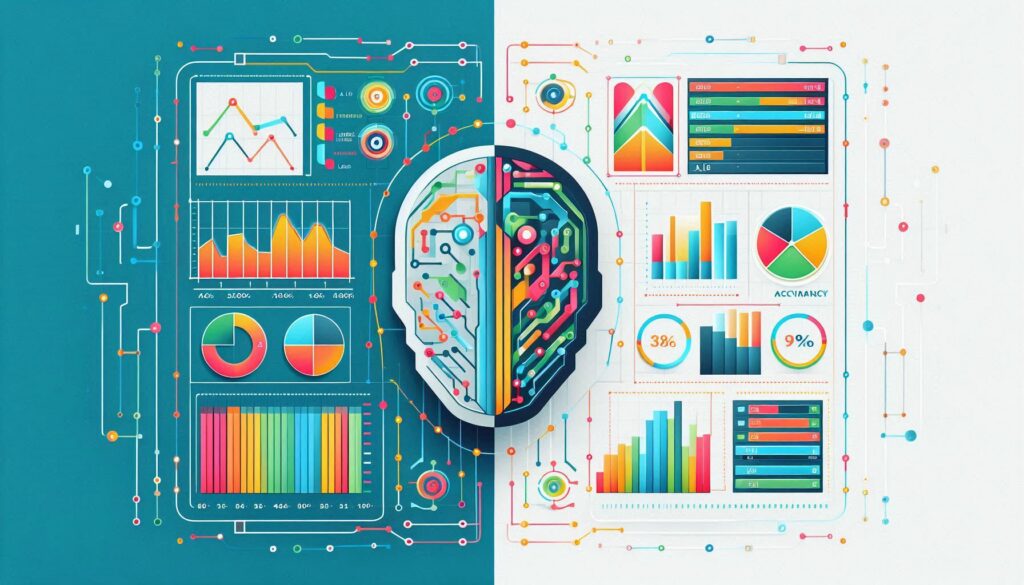
AI CERTS
6 months ago
AI Model Architecture Training: Building the Future
Artificial Intelligence (AI) is making waves in almost every aspect of our lives, from how we shop online to the way doctors diagnose diseases. But have you ever wondered what makes AI work so effectively? That’s where AI model architecture training comes in. Think of it as the secret recipe for building smart AI systems. It’s all about designing the framework that allows these systems to learn from data and improve over time.

Understanding how to create and refine these models is crucial because it directly impacts how well they perform. In a world where accuracy and efficiency matter more than ever, mastering model architecture can open doors to exciting opportunities in AI.
Whether you’re a seasoned professional in the tech world or just someone with a keen interest in AI, this article will guide you through the latest trends in model architecture training, why it’s so important, and what the future holds. Let's dive in and explore this fascinating topic together!
What is AI Model Architecture Training?
To put it simply, AI model architecture training is all about designing the structure of machine learning models so they perform at their best. Think of it as building a house; if you don’t have a solid foundation, no matter how beautiful the house looks, it won't stand tall for long. This process involves choosing the right algorithms, figuring out how many layers to include, and fine-tuning parameters to get optimal results.
Different methodologies come into play here, including supervised learning (where models learn from labeled data), unsupervised learning (which works with unlabeled data), and reinforcement learning (where models learn from feedback). Each of these approaches requires architectural considerations, depending on the type of data and what you're aiming to achieve.
Why is Model Architecture Important?
You might wonder, “Why should I care about model architecture?” Well, here are a few compelling reasons:
- Performance Optimization: Different architectures can lead to different levels of accuracy and efficiency. For example, Convolutional Neural Networks (CNNs) are fantastic for image data, while Recurrent Neural Networks (RNNs) shine when dealing with sequences, like text or time series.
- Scalability: As datasets expand, having a scalable architecture allows models to handle larger loads without sacrificing performance. In today’s world of big data, scalability is essential for effective AI solutions.
- Adaptability: Advanced architectures can be customized for various applications, from healthcare to finance and beyond. This versatility makes them invaluable for tackling a range of challenges across different industries.
Innovations in AI Model Architecture Training
The world of AI is buzzing with innovations in model architecture training. Here are some exciting trends that you should keep an eye on.
Automated Machine Learning (AutoML): Imagine being able to develop high-performing models without spending countless hours tweaking settings. That’s what AutoML does! It automates model selection and hyperparameter tuning, making life easier for data scientists and speeding up the development process.
- Neural Architecture Search (NAS): NAS takes the guesswork out of model design by using algorithms to find optimal architectures. This means we can discover model structures that humans might overlook, leading to breakthroughs in performance.
- Transfer Learning: This approach lets you build on existing models that have already been trained on large datasets. If you have limited labeled data, transfer learning can significantly reduce the time and resources needed for training. For example, a model trained on a broad image dataset can be fine-tuned for a specific application, yielding impressive results with less effort.
- Federated Learning: In today’s data-sensitive world, privacy is paramount. Federated learning allows models to be trained across multiple devices while keeping data local. This means that sensitive information remains secure while still benefiting from collaborative learning.
- Hybrid Models: We’re also seeing the emergence of hybrid models that combine different neural networks. For example, a model might blend CNNs and RNNs to analyze both visual and sequential data, which can enhance performance in complex tasks like video analysis.
Challenges in Model Architecture Training
With great power comes great responsibility, and the same goes for AI model architecture training. Here are some challenges we face:
- Complexity: Designing effective architectures isn’t always straightforward. It requires a deep understanding of the domain and algorithms involved. Balancing model complexity with interpretability can be tricky, especially when complex models produce results that are hard to explain.
- Resource Intensity: Training complex models can demand significant computational power, which can be costly and time-consuming. Organizations lacking high-performance computing resources may find themselves at a disadvantage.
- Overfitting: Finding the right balance between complexity and generalization is essential. Overfitting happens when a model learns the noise in the training data instead of the underlying patterns, leading to poor performance on new, unseen data. Techniques like regularization and dropout help mitigate this risk.
- Data Quality and Quantity: The success of model architecture training heavily depends on the quality and amount of data available. Insufficient or low-quality data can lead to inaccurate models, making data preprocessing a critical step in the training process.
Future Trends in AI Model Architecture Training

As we look to the future, several exciting trends are on the horizon for model architecture training:
- Explainability: With models becoming more complex, there’s an increasing demand for transparency. Researchers are working on making architectures that allow us to understand model decisions better. Explainable AI (XAI) techniques are becoming more integrated into training processes, helping demystify how models arrive at their conclusions.
- Integration of AI and Human Expertise: The future will likely see a blend of AI systems and human insights working together. This partnership can leverage human intuition to guide model development, making AI solutions even more relevant and effective.
- Focus on Efficiency: As environmental concerns rise, the AI community is putting more emphasis on developing energy-efficient architectures that reduce the carbon footprint of training. Techniques like pruning, quantization, and knowledge distillation are being explored to create leaner models without sacrificing performance.
- Edge AI: The rise of edge computing is pushing innovations in model architecture training aimed at deploying AI models on local devices. This shift allows for real-time processing and decision-making closer to the data source, reducing latency and bandwidth usage. As a result, architectures are being optimized for lower power consumption and quicker inference times.
Real-World Success Stories
Let’s take a moment to celebrate some organizations that have successfully harnessed innovative model architecture training techniques:
- Healthcare Breakthroughs: One healthcare provider used transfer learning and neural architecture search to create a model for spotting anomalies in medical images. By building on a pre-trained model, they achieved remarkable improvements in diagnostic accuracy, which ultimately led to better patient outcomes.
- Financial Services Innovation: A financial institution turned to automated machine learning to develop a model for predicting credit risk. By automating the model selection process, they slashed development time from weeks to just a few days, allowing them to deploy their solution in record time.
- Retail Transformation: A major retailer embraced federated learning to build personalized recommendation models without compromising customer privacy. This approach allowed them to analyze shopping behavior across multiple locations while keeping individual data secure.
Advancing Your Career in AI Model Architecture Training
As AI continues to evolve, staying up-to-date with the latest trends and skills is crucial. Certifications can provide valuable knowledge and enhance your career prospects in model architecture training. Here are some certifications you might consider:
- AI+ Engineer Certification by AI CERTs
Focused on practical AI applications, the AI Engineer certification emphasizes choosing the right architectures for specific tasks and optimizing model performance. This certification is ideal for aspiring AI engineers who want to develop their skills in model architecture and deployment, ensuring they can create effective AI solutions for real-world challenges. Learn More. - TensorFlow Developer Certificate
This certification demonstrates proficiency in using TensorFlow, one of the most popular frameworks for building and deploying machine learning models. It covers essential topics related to model architecture training, making it a must-have for anyone serious about pursuing a career in AI development. Learn More. - Machine Learning Certification by Stanford University
This prestigious certification dives deep into machine learning algorithms and training techniques, providing participants with the skills needed to design effective models. The course covers both theoretical and practical aspects of model architecture, making it an invaluable resource for those looking to enhance their expertise. Learn More. - AI+ Developer Certification by AI CERTs
The AI Developer certification focuses on essential skills for creating AI applications, including understanding model architecture, programming languages like Python, and working with machine learning frameworks. This certification prepares professionals to build, deploy, and optimize AI solutions in various domains. By completing this program, you’ll gain hands-on experience in developing AI models, making you well-equipped for roles that require practical application of AI technologies. Learn More.
Frequently Asked Questions (FAQ)
1. What is model architecture training in AI?
Model architecture training is the process of designing and optimizing the structure of machine learning models to enhance their performance on specific tasks. This includes selecting algorithms, defining layers, and fine-tuning parameters.
2. Why is model architecture important?
Model architecture is crucial because it directly affects the performance, scalability, and adaptability of AI systems. A well-structured model can significantly improve accuracy and efficiency.
3. What are the current trends in AI model architecture training?
Current trends include automated machine learning (AutoML), neural architecture search (NAS), transfer learning, federated learning, and the development of hybrid models that combine different types of neural networks.
4. What challenges are associated with model architecture training?
Challenges include the complexity of designing effective architectures, the resource intensity of training complex models, the risk of overfitting, and the reliance on high-quality data for successful training.
5. How can I advance my career in AI model architecture training?
To advance your career, consider continuous education and certifications focused on AI and machine learning. Certifications like the Certified Artificial Intelligence Practitioner (CAIP) or specialized courses from reputable institutions can enhance your skills.

Conclusion
AI model architecture training is a vibrant and ever-evolving field that plays a crucial role in advancing artificial intelligence. By understanding the principles, innovations, and challenges involved, professionals can position themselves for success in this exciting industry. As the demand for AI solutions continues to rise, the ability to design and implement effective model architectures will become increasingly vital.
"Have questions or need assistance? Reach out to us! Our team is here to help you on your journey to mastering AI and unlocking new career opportunities!"